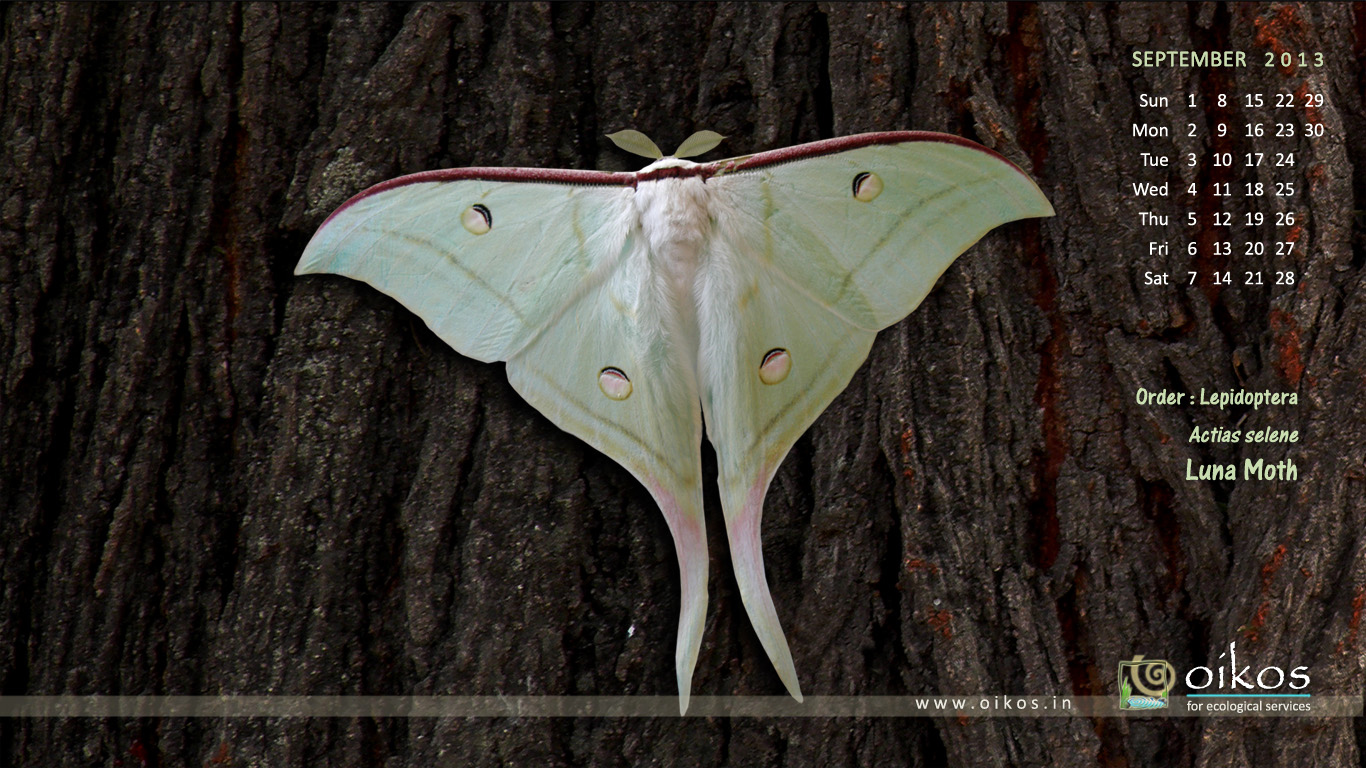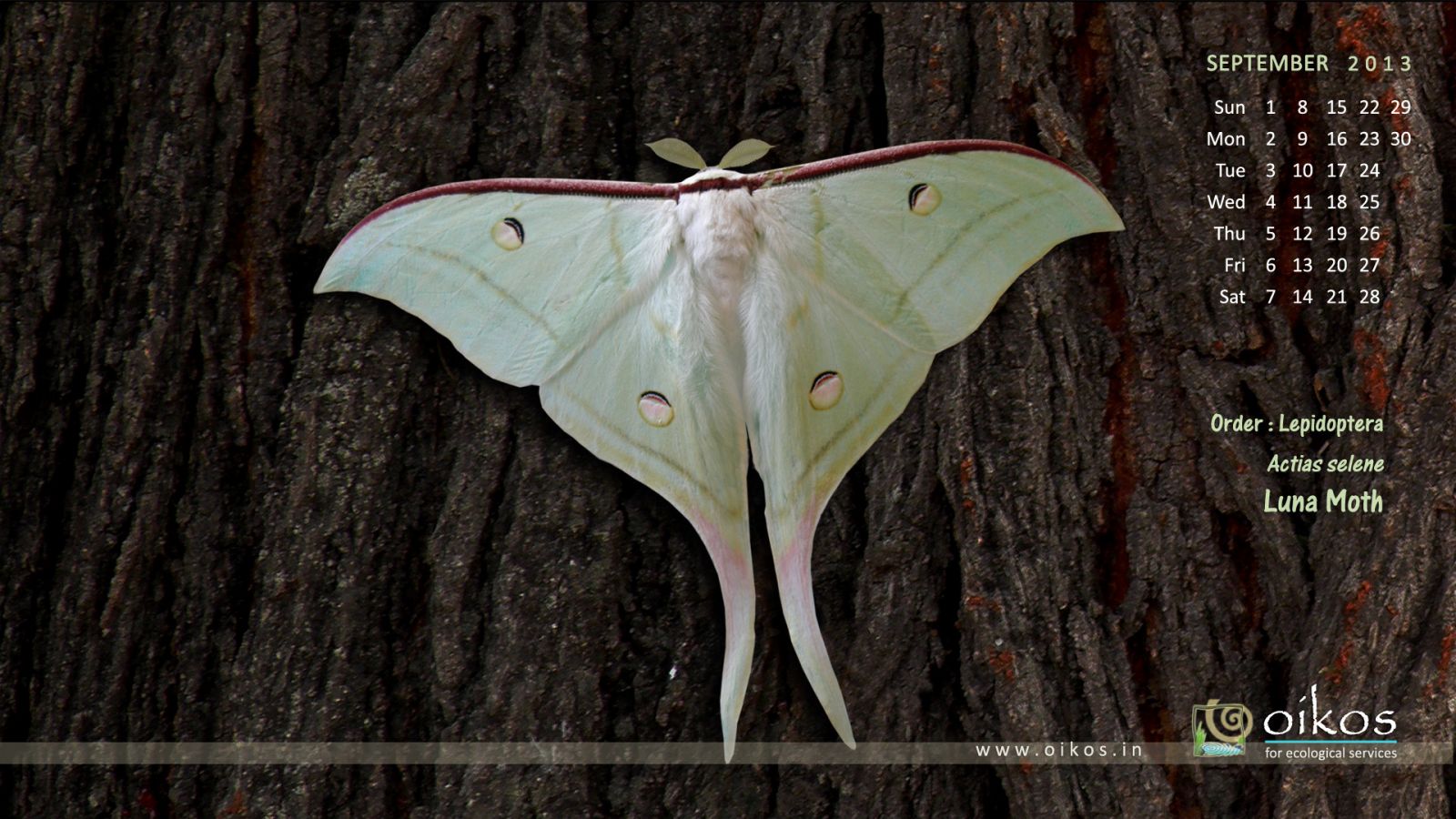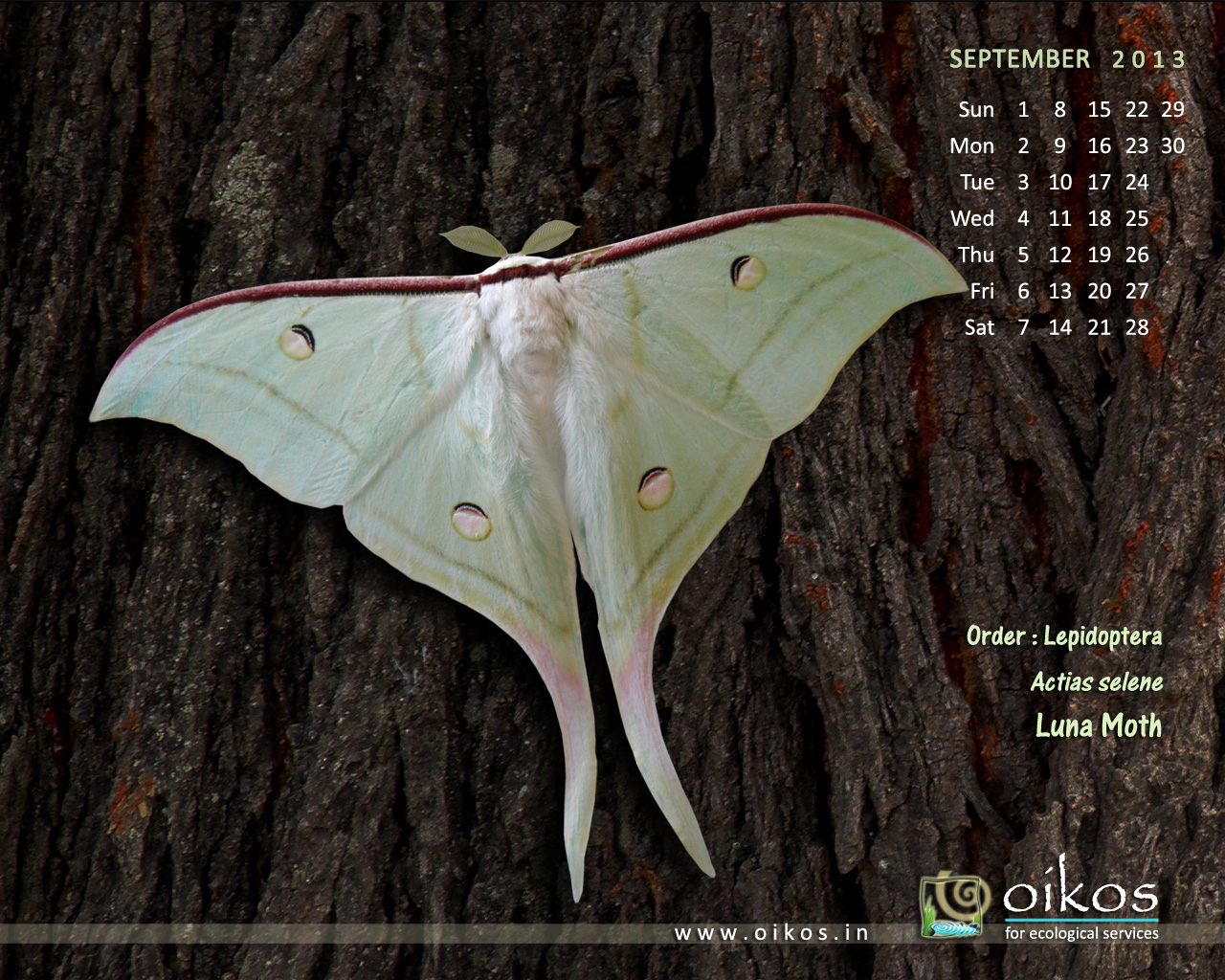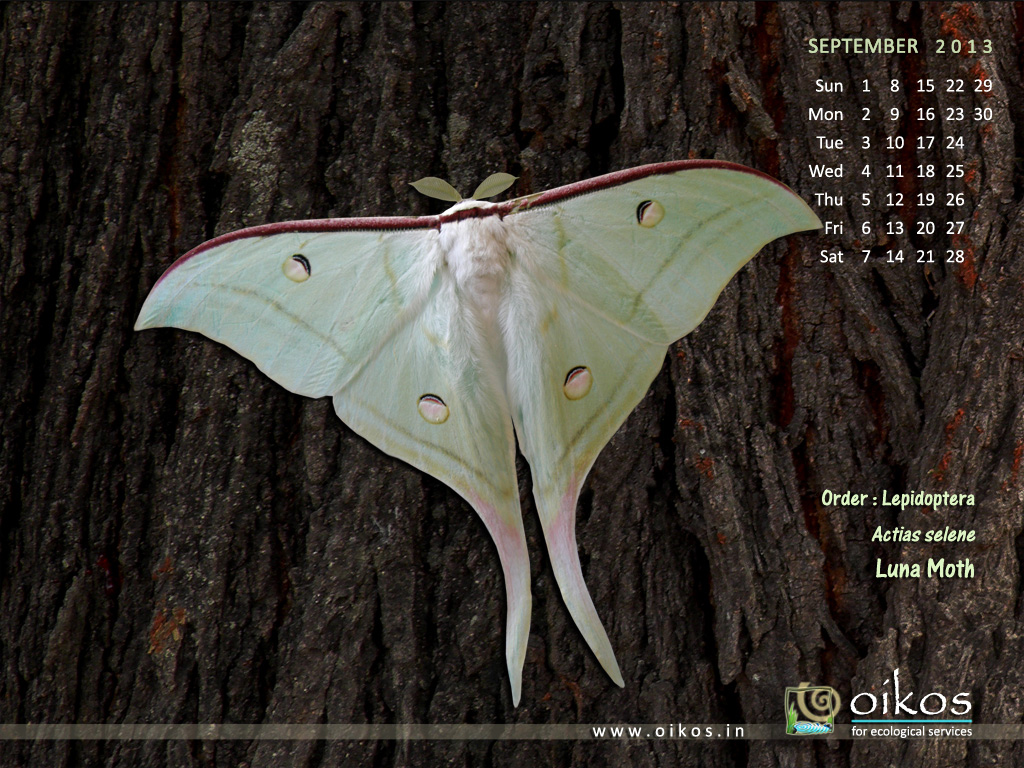Sep - 2013
| September - 2013 | ||||||||||
|
Dear Nature Lovers,
Greetings from oikos ! The most commonly known group of insects is ‘Lepidoptera’ which includes Butterflies and Moths. Of which Moths are less identified, though certain characteristic clearly differentiates it from butterflies.
|
||||||||||
|
||||||||||
| Regards, Ketaki & Manasi. |
||||||||||
|
Butterflies & Moths
ORDER : Lepidoptera The order Lepidoptera (lepis = scale, pteron = wings) includes butterflies and moths. Wings : Adult with two pair of wings covered with scales. Mouth Parts : Adults have sucking mouthparts, Larva have chewing mouth parts. Metamorphosis : Complete. Egg – Larva – Pupa - Adult. Significance to Humans : Those are important pollinators, also they are bio-indicators. Larvae can be destructive to food crops. |
||||||||||
|
Luna Moth (Actias selene)
Pale green colored moth with wingspan 130 mm – 150 mm. It has got yellow eye- spot with pinkish centre on each wing. Hind wings with long tails. This moth is commonly seen in forested areas or woddlands. Adults are very strong fliers and are attracted to lights. Mating takes place after midnight, and egg-laying begins that evening. Females lay eggs in small groups or singly on both surfaces of host plant leaves. Larval host plants : Nana, Moi, Mango, Shewaga, Kinjal etc. * Note feathery antennae in image characteristics of male moths. Reference for information : Field guide : “Insects of BNHS reserve” by BNHS, Mumbai, Indian Insects and Arachnids by Meenakshi Venkataraman. |
Click on any of the desired options below to get appropriate image.
Save it to computer and set it as desktop background for your computer monitor.
Oikos for ecological services
Ph. 020-25451875
Web: www.oikos.in





